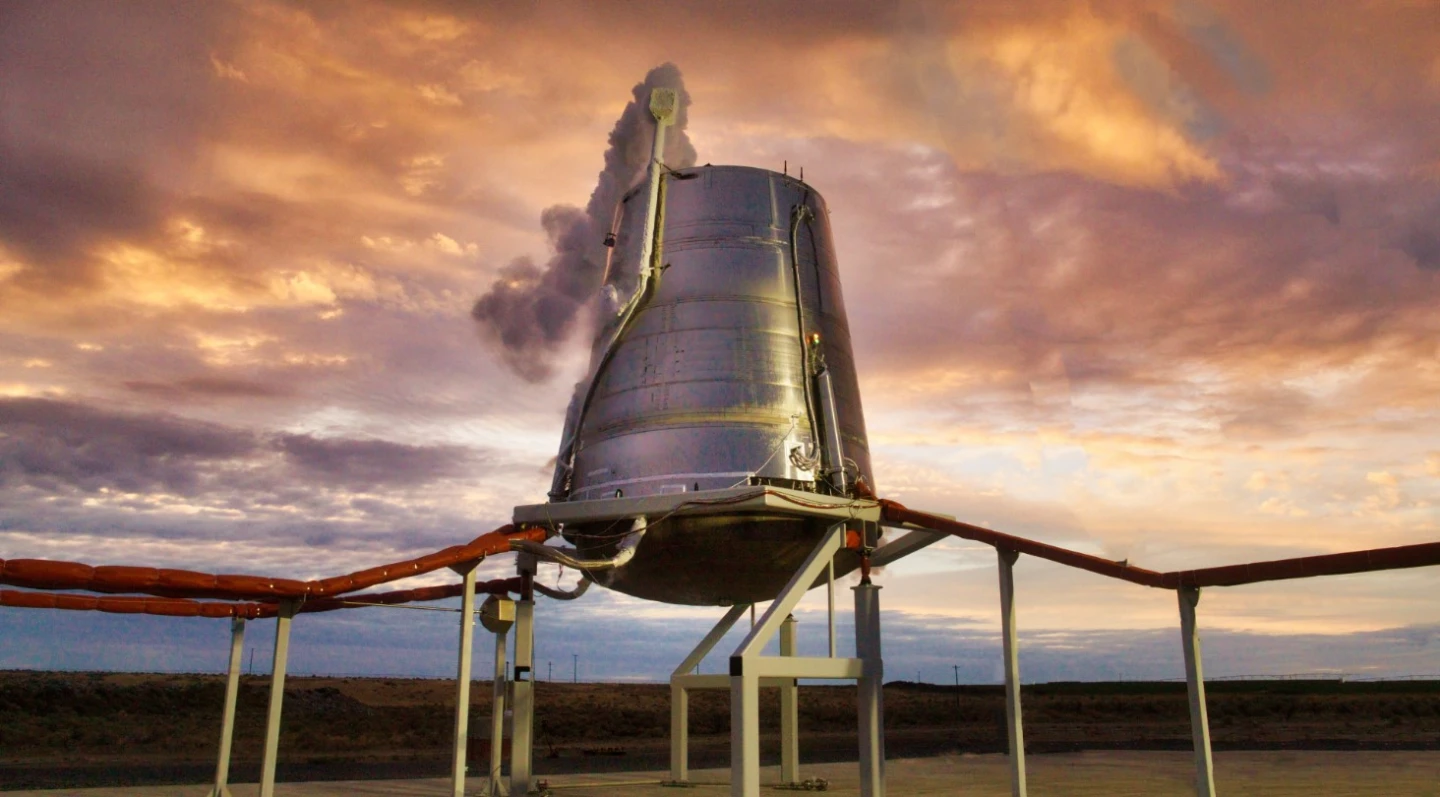Startup Stoke Space has successfully completed a 15-second vertical launch/vertical landing test of its Hopper VTVL reusable rocket that is capable of atmospheric reentry and landing after acting as a launch vehicle second stage.
Over the past couple of decades, orbital launchers have been undergoing something of a redesign. Where rockets were once regarded as one-and-done disposable machines, today they are becoming much more sophisticated, reusable systems to both bring down costs and expand their capabilities.
For its Hopper2 test at its Moses Lake site in Washington on September 17, 2023, Stoke Space sent its Hooper prototype on a modest flight that took it only 30 ft (9 m) off the ground for a mere 15 seconds. That may seem pretty small potatoes, but the goal was to demonstrate a number of advanced systems for future second stage rockets.

One of these systems is a hydrogen/oxygen rocket engine that, from the released images that show a conical section on the bottom of the Hopper with a ring of thrusters around it, appears to be a variant on an aerospike. In an aerospike, the curve of the conical section acts like half the cross section of a rocket's bell that contains the escaping gases. The air around the cone acts like the other half. As the rocket ascends, the change in ambient air pressure allows the aerospike to automatically adjust the bell section for greater efficiency,
Another advantage of the ring of thrusters means that by throttling the thrusters individually, they can be used for attitude control.
Here’s the static fire video! This all-up test was really a hop mission simulation and included everything from flight avionics, power systems, computers, GNC, RCS, tank pressurization, and, of course, the engine and heat shield. The only thing we simulated was the position data,… pic.twitter.com/Ol5DfU0cra
— Stoke Space (@stoke_space) September 14, 2023
According to Stoke, the flight also included the first test of a regeneratively cooled heat shield, which the rocket will need if it is to reenter the atmosphere from orbit and then land. Until now, heat shields have either used ceramic tiles or an ablative phenol plastic shield. The tiles absorb heat, but only release it slowly, while the plastic shield burns away, taking the heat with it. In regenerative cooling, the fuel from the rocket is circulated behind the shield to take away heat before the fuel is fed into the thrusters.
Stoke claims that when its rocket becomes operational, it will be 100% reusable with a 24-hour turnaround period.
Source: Stoke Space







